Kuratiert von Dovrat Meron
Beyond commemoration
„Hit & Run“ Performance und Intervention am Denkmal für die ermordeten Juden Europas
Ebert Str. Ecke Behren Str. (U/S Brandenburger Tor)
Kuratiert von Dovrat Meron
Eintritt Frei
Das Denkmal ist ein öffentlicher Ort auf privatem Gelände. Kunstprojekte sind verboten! Im Kontext von sensiblen urbanen Gebieten ist die “Hit and Run” Strategie, die einzige Möglichkeit ein Publikum an einer Intervention mit kritischem Anliegen teilhaben zu lassen.
Für Beyond Commemoration hat Dovrat Meron eine israelische, eine deutsche und eine argentinische Künstlerin eingeladen am Holocaust Denkmal in Berlin ein ortsbezogenes Projekt zu entwickeln. Diese kuratorische Forschung befasst sich mit unterschiedlichen kuratorischen Herangehensweisen von ortsbezogenen Performances und Aktionen im öffentlichen Raum.
 Errinerung2
Errinerung2
von Birgit Auf der Lauer
Sa. 25.05. (22:30-23.10h)
Performative Führung, max. 15 Leute, wir bitten um eine frühe Registrierung bei: mpaberlin2013@gmail.com
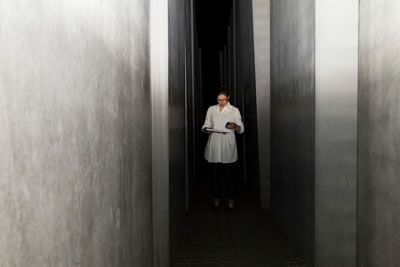
Birgit Auf Der Lauer – Photo by Paul Holdsworth & Daniela Garcia del Pomar
Das Denkmal erzeugt in uns Reaktionen, es ist begehbar und wird zu einem ästhetischen Erlebnis, das in unserer Rezeption, die nicht kontrollierbar ist, unendlich viele Wucherungen und Variationen des Verhaltens beim, zum und jenseits des Gedenkens an den Holocaust hervorruft. In Errinerung2 führt die deutsche Künstlerin Birgit Auf der Lauer zur mannigfaltigen Erinnerung der Denkmalbesucher.
Die Künstlerin Birgit Auf der Lauer (MA, 1981) arbeitet an performativen und partizipativen Projekten, die im Bereich der künstlerischen Stadt- und Raumforschung angesiedelt sind. Durch Performance, Zeichnung, Video und Kartierung setz sie künstlerische Rechercheprozesse ins Material um.
Ab August 2012 ist sie Stipendiatin für Kunstvermittlung der “NGBK” und betreibt seit Herbst 2011 mit Kollegen (Caspar Pauli, Anja Bodanowitz, Artur van Balen, Timo Szepanska) und dem Kreuzberg-Museum den „Kanu Club zur Erforschung der Stadt“. Mehr Infos auf
www.varsityofmaneuvers.org
 Kleine Fragen für große Orte
Kleine Fragen für große Orte
von Valeria Schwarz & Performer Maik Kerner
So. 26.05.2013 (17-19h)
Wir bitten das Stelenfeld zu erkunden, um die Intervention zu finden.
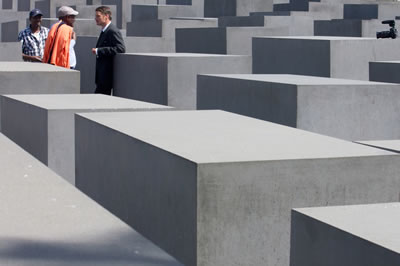
Valeria Schwarz & Maik Kerner – Photo by Paul Holdsworth & Daniela Garcia del Pomar
Die argentinische Künstlerin und Kuratorin Valeria Schwarz hat eine Intervention entwickelt, die von Maik Kerner durchgeführt wird. Zusammen mit den Besuchern des Holocaust Mahnmals werden die Hausregeln erforscht und die Form des individuellen Erinnerns untersucht. Kleine Fragen für große Orte erscheint dann als eine bewusste Betrachtung des Verhaltens im Denkmal.
Valeria Schwarz ist Kuratorin, Künstlerin und Kulturmanagerin. Sie studierte Kunstgeschichte an der Univ. von Buenos Aires, Argentinien und visuelle Kunst an der Univ. von Salamanca, Spanien. Seit 2007 lebt und arbeitet sie in Berlin, wo sie mehrere Künstlern und Galerien assistiert hat, wie Julian Rosefeldt, Invaliden1, DNA Berlin, Berlin Art Projects, u.a. Im Jahr 2009 organisierte sie die Panel Diskussion Die Problematik des Kollektionismus in Zeiten der Dematerialisierung im Goethe Institut Berlin. Als Kuratorin hat sie selbständige Projekte konzipiert (7 DAYS, Offensichtlich Öffentlich in Zusammenarbeit mit Peer Golo Willi) sowie institutionelle Ausstellungen (Amerika, im Rahmen von Parallel Events Manifesta 8 und verschieden Ausstellungen bei Berlin Art Projects). Als Mitgründerin des Vereins i Collective hat sie inVESTIR (Parallel Events Manifesta 8, Murcia, 2010 und Manifesta 9, Belgium, 2012), STORY BOX (48 Stunden Neukölln, Berlin, 2010 und La Noche de los Museos, Buenos Aires, 2012) konzipiert. Ihre Werke wurden u.a. in Souterrain (Berlin), Museu da Fotografia (Curitiba, Brasilien), Instituto Paranaense de Arte (Curitiba, Brasilien), Kunstraum – Hallein und Die Schmiede, Österreich, Argentinische Botschaft in Berlin, Mein Blau e.V. (Berlin) u.a. gezeigt.
Mehr Infos auf www.valeriaschwarz.com
Insight Skin
Insight Skin
von Moran Sanderovich
So. 26.5.2013 (20:30)
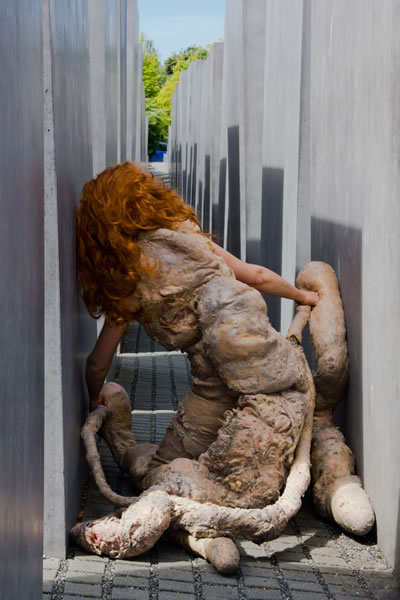
Moran Sanderovich – Photo by Paul Holdsworth & Daniela Garcia del Pomar
Aufgrund des subversiven Charakters der Performance empfehlen wir und bitten um Pünktlichkeit.
Die Arbeit “Insight Skin” von Moran Sanderovich wurde in Jerusalem entwickelt und uraufgeführt.
Die Arbeit dreht sich um das Thema, wie unterdrückte Erinnerungen und interne Konflikte den menschlichen Körper formen und transformieren. Die Adaption der Performance für das Denkmal animiert Fragen der Wiederholung.
„Der Weg der neueren Menschheit geht von der Humanität durch die Nationalität zur Bestialität“ (Grillparzer, 1848)
Moran Sanderovich (Israel, 1980) Studierte an der Schule für visuelles Theater/Jerusalem.
Ihre Performance, „Human Nature“ (2008) wurde auf Festivals in Israel, Estland, Polen, Serbien und in die Niederlanden eingeladen und hat den „Beste Show“ Prize in ‚FIRST’ Festival in Belgrad 2008 bekommen. Im selben Jahr hat sie eine Auszeichnung für ihre Kreativen Leistungen vom Bürgermeister von Jerusalem bekommen. Moran Sanderovich’s Performances sind Zeremonien die Mutationen aufruft und die sich mit ihrer schmerzhaften Vergangenheit und Gegenwart beschäftigt.
Mehr Infos auf www.moran.sanderovich.com
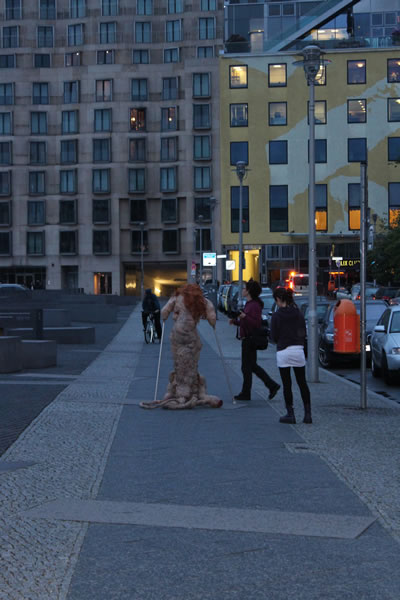
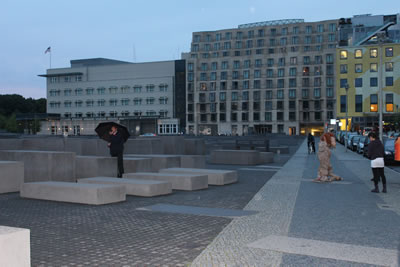
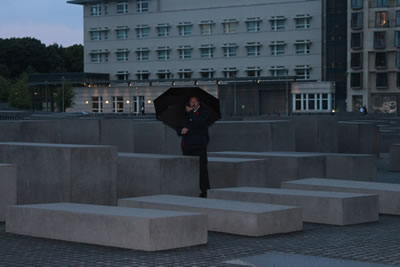
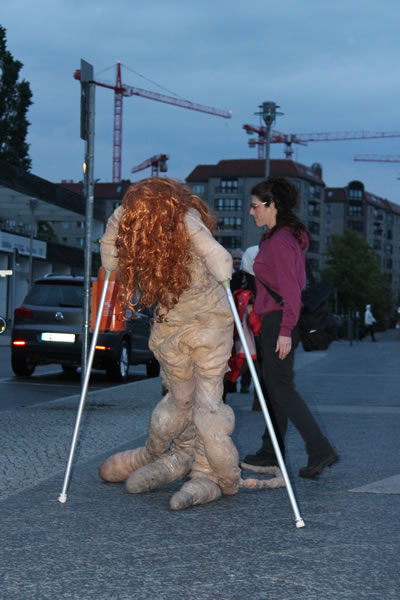
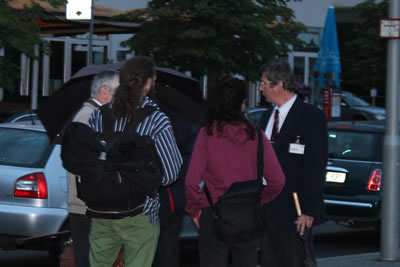
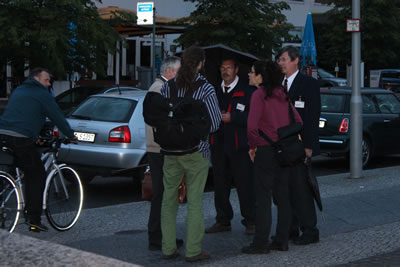
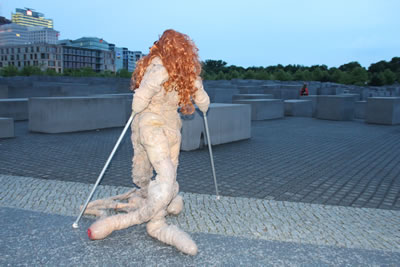
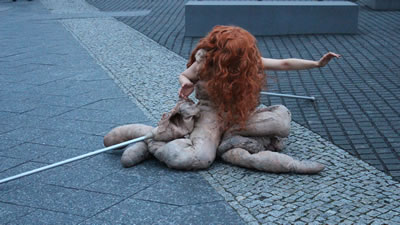
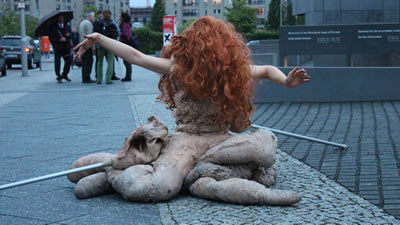
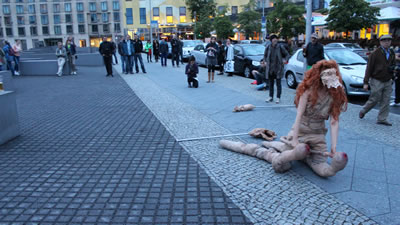
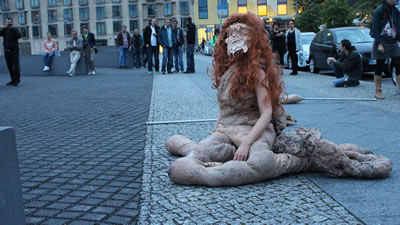
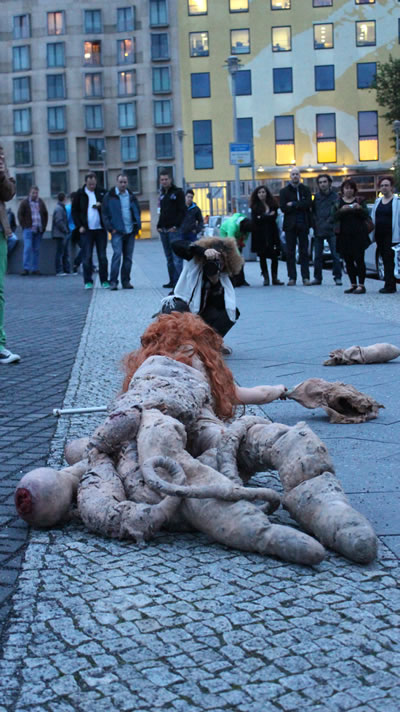
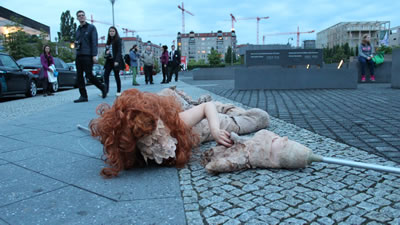
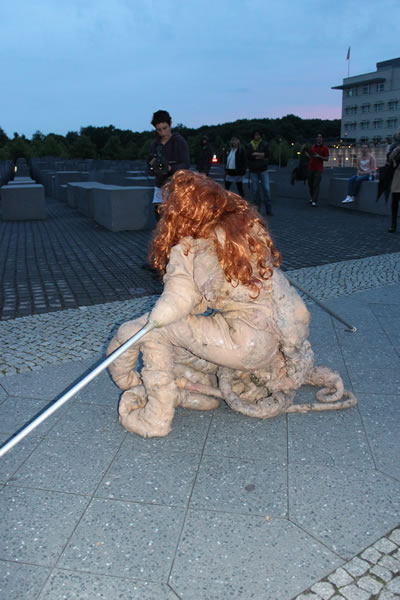
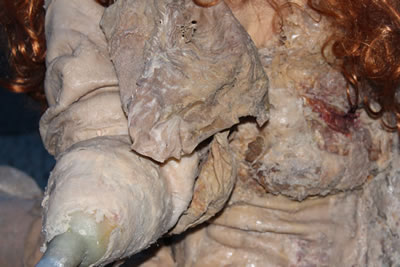
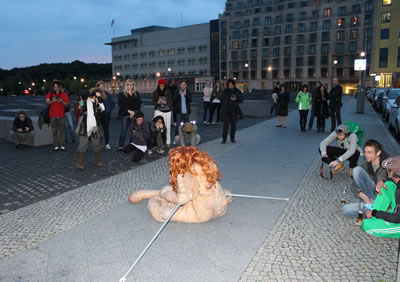
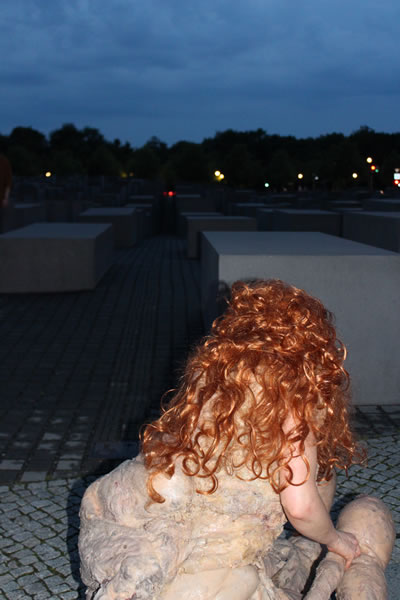
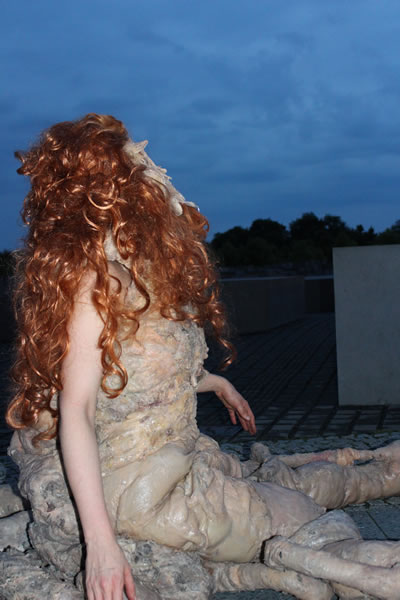
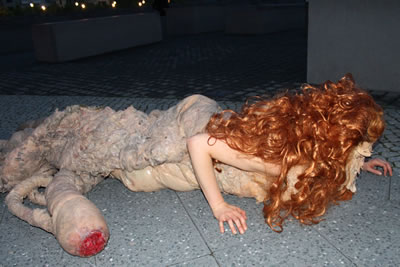
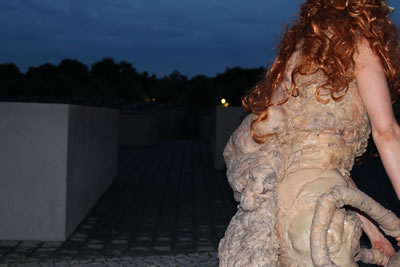
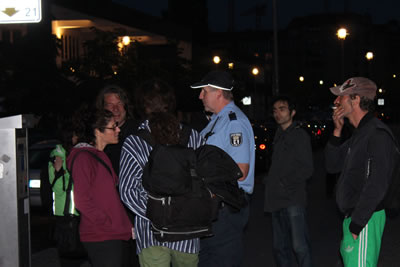
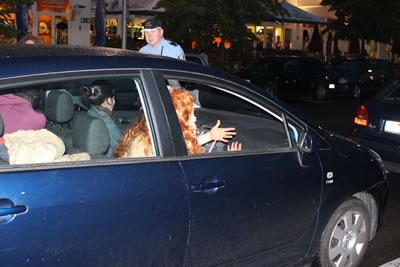
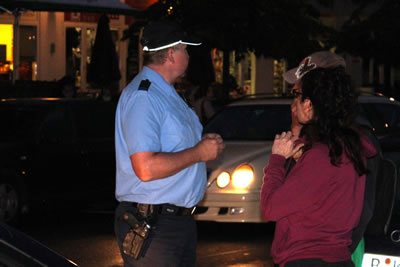
Beyond Commemoration – Exhibition
Beyond Commemoration – Exhibition
Vernissage Fri. 24.5.2013 (19 h)
25.5.2013 -2.6.2013 Thu-Sun (15-17 h
)
Finnisage 2.6 7pm
KünstlerInnen Gespräch mit Moran Sanderovich, Birgit Auf der Lauer und Valeria Schwarz und Maik Kerner.
Round Table mit Dr. Ana Maria Rabe (Philosophin und Autorin)
Moderation: Dovrat Meron
okk|raum29
Prinzenallee 29, 13359 Wedding Berlin
Gezeigt werden die Videodokumentation und Fotos von Paul Holdsworth & Daniela Garcia del Pomar, Noam Gorbat und Catalina Fernandez der ersten Beyond Commemoration Aktion, die am 22. und 23. Juli 2012, stattfand. Und Videos von Arturo Martinez Steele. Dovrat lud drei Künstlerinnen ein am Holocaust Denkmal in Berlin ein ortsbezogenes Projekt zu entwickeln. Ihre Projekte befassen sich mit unterschiedlichen kuratorischen Herangehensweisen von ortsbezogenen Performances und Aktionen im öffentlichen Raum.
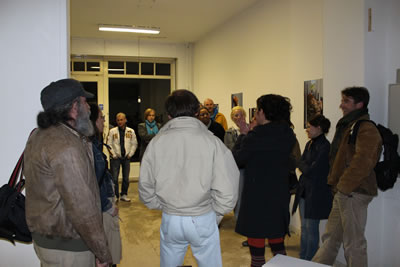
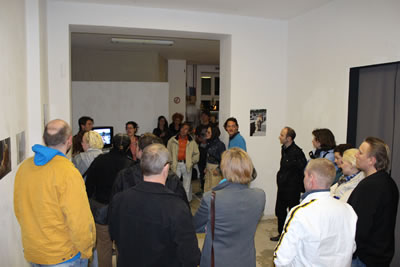
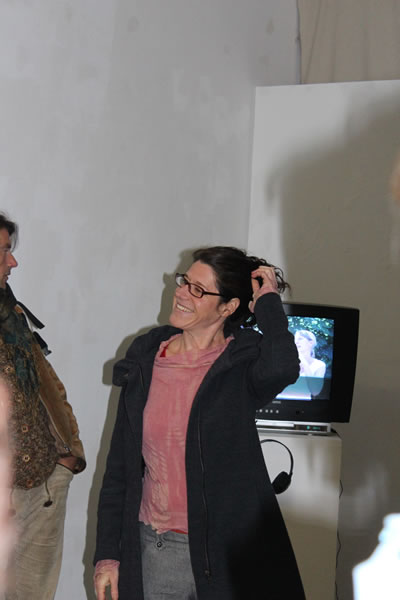
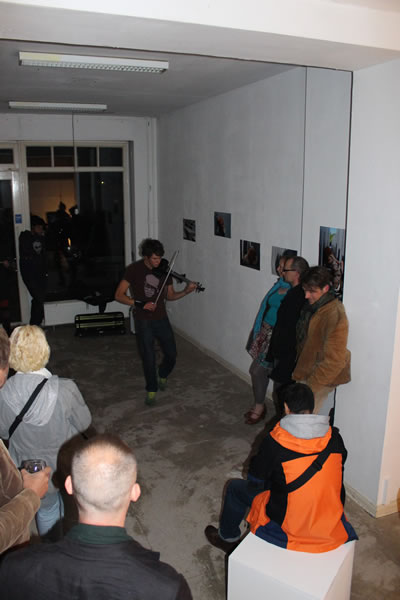
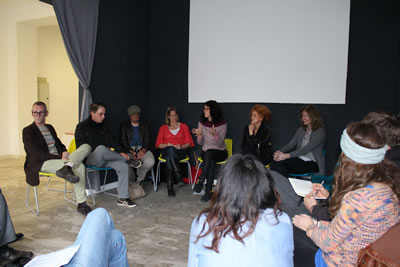
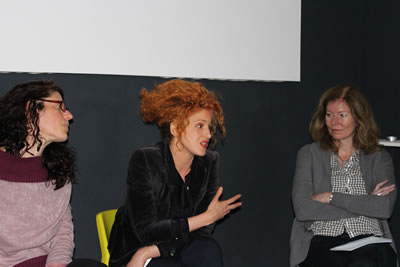
Dovrat Meron ist eine israelische Performancekünstlerin und Kuratorin. Ihre Arbeit befasst sich mit unterschiedlichen kuratorischen Herangehensweisen von ortsbezogenen Performances, Aktionen und Intervention im öffentlichen Raum, Kultur Politik und Institutionskritik.
Sie ist MPA-B 3 Month of Performance Art Berlin 2013 Co-Kuratorin.
Zwischen 2007- 2009 arbeitete Dovrat Meron als Projektmanagerin, Koordinatorin und Kuratorin in der ScalaMata Galerie in Venedig. Sie gründete FreeDoMe of Movement, ein Projekt, das Performance Kunst und Kulturelle Veranstaltungen fördert. 2009 kuratierte sie „Memory Space“, eine ortsspezifische Performanceserie an 10 verschiedenen Orten auf der 53 Kunst-Biennale in Venedig.
2012 kuratierte sie “Das Gesetz des Marktes / Berlin – Bangalore” in Zusammenarbeit mit Studenten der Kunsthochschule Weissensee Berlin und Studenten der Kunsthochschule Bangalore, Indien.
Sie absolvierte ihren BA in Theaterregie, Theaterpädagogik und Schauspieltrainerin an der Kibbuzim College Tel Aviv. (1997). BA in Theater Wissenschaft Haifa Universität (2000) und MA Raumstrategien an der Kunsthochschule Weißensee in Berlin (2012).
Performances und Projekte Auswahl: “Tourist trap” “The Lots 1- 4”, (2012), “Public relations”, “Untranslatable words” Land of milk and honey” “Slip into something more comfortable”, “Get it while you can”, (2011)“ “Performace Heart”, “The bloody Trilogy”, “Naznazim” (2010) “Bringing stars to the skies- Poetically correct” (2009) “The nature of a red dot” “Illegal Movement” „Globalise Body“ (2008) “Fiktionsbescheinigung” (2007) “Over exposed” (2007) „Mute“ (2003)
Für mehr Informationen: www.dovratmeron.de
Holocaust “light” by Dovrat Meron
Eisenman’s impressive Holocaust Memorial became one of Berlin’s most famous tourist attractions. But is it fulfilling its role as a place for commemoration?! Are there other alternative ways to invite to remember what most people prefer to forget? Beyond Commemoration evolve these questions.
One of the fascinating facts about the Holocaust Memorial is its in-between-ness. The Holocaust memorial is a public space built on a private area belongs to the German government and managed by the Holocaust Memorial Foundation. This makes it one of many in-between public/private spaces. Art projects of any kind are strictly forbidden and the request for permits to take photos and film video in the memorial for future public screening is doomed to be refused as part of the policy of the memorial foundation. Due to this strict position I have applied the Hit and run curatorial approach which is the only way to intervene with critical intention in sensitive urban places and engages the general public in a meaningful way outside gallery/museum space.
The in-between private public space “thing” is a public space that is seemingly open to all people but in fact is completely private. I call it an in-between place because it is not clear to people that enter it whether it is public or private. Eisenman himself refused to set a sign which indicates the memorial and give information about it. Bringing time there and talking to many people /tourists at the memorial I met people, mostly young, that had no idea that they are at the Holocaust memorial to the murdered Jews. It is also a fact and only very small part of the memorial visitors visits the information centre below the Memorial which tells the story of the genocide of the European-Jewish population, and this is exactly where Eisenmans memorial fails.
One of the main criticisms against the memorial is that it does not invite to any discourse. Its „cold grammar“does not promote action to arise on the culture of memory but I do not believe that this was Eisenmans intention when he designed it. The 2,711 concrete blocks (stelae) of this memorial are not able to look to the people in the eyes, act, react or lead a dialogue, and this is exactly the effect that Eisenman’s wanted to provoke, the feeling of being left alone small and hopeless even at a time when the memorial is full of people, this is the reason that the pathways are narrow, to prevent people from walking side by side. Art projects aiming to provoke other than that can and should be taking place elsewhere.
If that should be the case, why did I as well as many other artists, explicitly chose to work at the Holocaust memorial? Is it because it is a tourist site located in the most central location in Berlin? Or because it became a symbol for a comfortable, photogenic, commemoration and offers an interesting discourse? I am not sure about other artists; but what I wish to criticize here is not the foundation’s decision to forbid art projects in the memorial. The Artist has the right to prevent external art projects from taking place at the memorial, and I do agree that the effort to consider all the art projects that are proposed is too big, but I rather dispute the decision to declare it as the National Holocaust memorial of Germany.
I believe that one way to create a discourse around the Holocaust in a way that will not create tiredness or antagonism is not by erecting stones but rather through interacting and intervening with people, regardless to a specific place, ex holocaust site or a memorial.
In 1997 graffiti on the temporary fencing of the construction site of the memorial declared ‘The debate is the memorial!’ “However, it is, paradoxically, a ‘reverse embodiment inasmuch as the slogan would now read: ‘The memorial is the debate’. In other words, the sentiment expressed by the graffiti of keeping the debate alive, fluid and public has ended up being enshrined in Eisenman’s design in defiance of the graffiti’s obvious fear that no memorial site would be able to do this”. (Whybrow Nocolas, Art and the city I.B Tauris, 2011)
Living in Berlin as an Israeli and Jew I never had the urge to create around this topic and it took me quite a long while to visit the Memorial itself and the info centre below it. My interest is not in the Holocaust as the most vicious crime against humanity but the ways that the German government chose to commemorate it and the way that it is remembered nationally with the fact that there are still Neo Nazis, and protected organised terror cells in Germany of 2013.
The remains of the Holocaust are to be found in every corner of Berlin, in many other places in Germany and its echo reverberates in other countries in Europe.
I have come to the conclusion that there is a place for a project which aims to deal seriously with the remembrance of the Holocaust, offering an alternative approach to the existing remembrance methods, a project that calls for artists to develop performance, action and intervention and that challenges with new ways to remember, a project that reminds! Such a project should not be an ensemble of static monuments and already existing commemorating public sculpture. But rather a flexible project, free to take place everywhere, in Berlin and Germany not only where crimes against Jews took place and away from ‘complete’ and touristy memorials.
